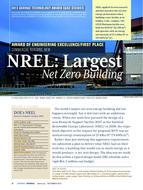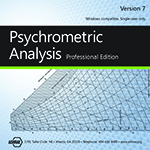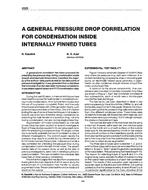The use of ventilated air spaces behind claddings has been shown to influence the performance of some wall assemblies. Recently completed field and laboratory research has shown that cladding ventilation has the potential to increase drying and reduce wetting from absorptive claddings and sun-driven moisture.
The use of one-dimensional hygrothermal simulation software has been well established for a wide range of wall and roof assemblies. However, the use of such software has previously had a limited ability to accurately model the physics of enclosures with ventilated claddings. The most recent version of WUFI 4.1 (a widely used hygrothermal simulation package) adds the ability to model enclosure systems that incorporate embedded sources and sinks of moisture and heat. This capability can be used to model source effects, such as air and rain leakage within a wall assembly, or sinks, such as drainage and ventilation.
This paper investigates the use of the WUFI “source and sink†approach in a one-dimensional model to simulate ventilation and rain leakage behind claddings. The simulation predictions are compared to the field performance of several different wall assemblies. Lessons learned on the use of this new model will be discussed. The impact of such effects as rainwater leaks and cladding ventilation rates are also investigated.
Presented at Thermal Performance of Exterior Envelopes of Whole Buildings X – December 2007
Units: SI
Citation: Thermal Performance of Exterior Envelopes of Whole Buildings X
Product Details
- Published:
- 2008
- Number of Pages:
- 16
- File Size:
- 1 file , 3.7 MB
- Product Code(s):
- D-BldgsX51


